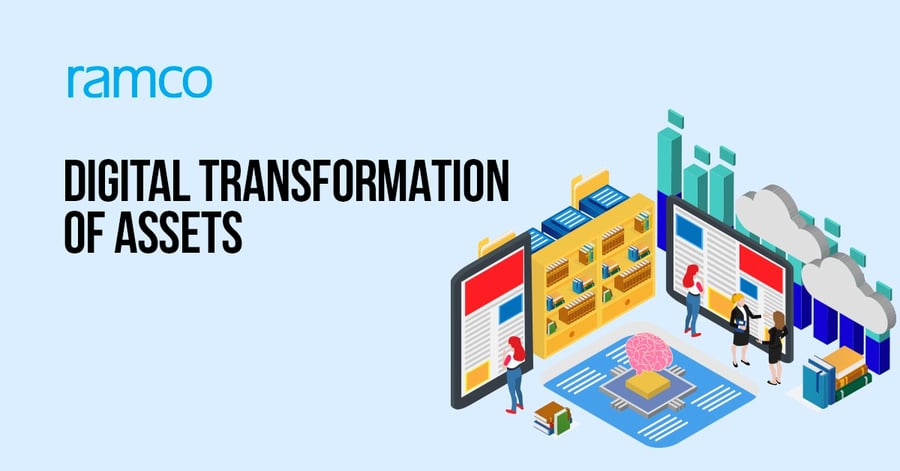
- Home
- Artificial Intelligence ERP
- Why Should Asset Management Go Digital?
Why Should Asset Management Go Digital?
Published :

The pandemic is hard, but it has certainly created a lot of opportunities – for new learnings, improvements, and bringing digital transformation to industries. In the asset-intensive space, asset management with digital twins is the new normal, and applying digital solutions for information management throughout the asset management lifecycle is inevitable.
The industry needs to sharpen the focus on environmental sustainability and workplace safety, considering what has happened to the world with the pandemic… There is a dire need to move from reactive to prescriptive to a predictive model. We need to predict failure before it occurs, before something breaks down and cascades down to everything else around.
The role of IoT in facility management is imperative. A wide range of day-to-day responsibilities need to be addressed using IoT, especially in industries including hospitality, healthcare, energy and utilities, manufacturing, and many other industries. We must also take into account the responsibilities revolving around shop floors, workshops, office areas, etc. Without IoT keeping track of documentation, ensuring customer satisfaction and environmental safety will be challenging. IoT is certainly critical in ensuring efficiency, safety, and customer attractiveness to the business.
Scrutinizing challenges
A maintenance manager’s tasks are daunting and include intellectualizing maintenance strategies that comprise preventive, predictive, and corrective maintenance. Communication is another important task that includes 2-way communication concerning teamwork, concerning the environment, and the services provided. Managing labor, allocating tasks, monitoring employee productivity, looking for new talents, etc are all part of the day-to-day activities for a facility manager. Conceptualizing new projects, long-term planning, gathering a capable team are a few more things that a facility manager may also be actively involved in. Among all these, emergency management, and elimination of faults and risks associated (as soon as they appear) are central to their responsibility. Apart from the aforementioned responsibilities, forecasting fluctuations, and managing resources required for maintenance including spares, tools, machines, and human resources are challenging too.
A facility manager endures a plethora of challenges in maintaining and managing the facility including real-time collaboration and lack of collaboration resulting in miscommunication. Some of the other challenges would be:
Exploring intelligent answers
In the last few years, the industry has seen interesting trends in facility management. One such trend is the 3rd party integration using an API driven architecture which helps an organization to integrate seamlessly, avoiding redundancy of data and eliminating the need to move all company data to and from the disparate system. Using AI and ML and predictive analytics, companies can make better decisions, forecast and plan better in the long run, eliminate human errors in decision making, and ensure customer satisfaction and other performance-related metrics. Mobility has become crucial for day to day transactions and reporting. Mobile apps help facility managers review asset maintenance, and technicians to execute work, besides providing the flexibility to respond to failures, and reporting faults, and accessing data in real-time.
Digital Transformation can doubtlessly improve Facility Management Systems. Tracking multiple operations at the same time, driving more intellect using a wide range of automation opportunities, reducing operating costs, and looking at patterns in usage, the demand of resources, electric utilities - can all bring optimization in asset management.
Digital Transformation can result in increased employee performance since automating mundane chores will give them time to work on bigger functions that will help them derive better satisfaction from their jobs. Here are some of the areas where automation will be useful - creating work orders automatically based on outliers and filtering out abnormalities, and finally bringing transparency with real-time updates, notification, insights into employee performance, and machine performance.
On the IoT front, Bluetooth beacons can be used to send data through Bluetooth. This can be deployed in access cards, and in machines to get the status of equipment, building security at facilities, and so on. RFID (radio-frequency identification) trackers can be used to track the identity of operators, technicians, and provide access control using real-time location tracking. Data analytics and visualization tools can manage and process data to give valuable insights that will be useful for decision making, performance, and occupancy.
Digital Transformation can help a business scale up, improve safety and talent experience, reduce operating costs, and create an agile working environment. With the rise of emerging technologies, it is now possible to create more variety and reliability of data. This data has great potential for unlocking meaningful insights that will make way for predictive maintenance and optimizing operational decisions.
Now is the time to digitally transform the asset management functions in your organizations. As we read this article, there are tens of thousands of organizations already building new digital capabilities and harvesting the rewards. Embracing digital is inevitable…let's not miss the future!

All Rights Reserved. © Copyright 2023. Ramco Systems.